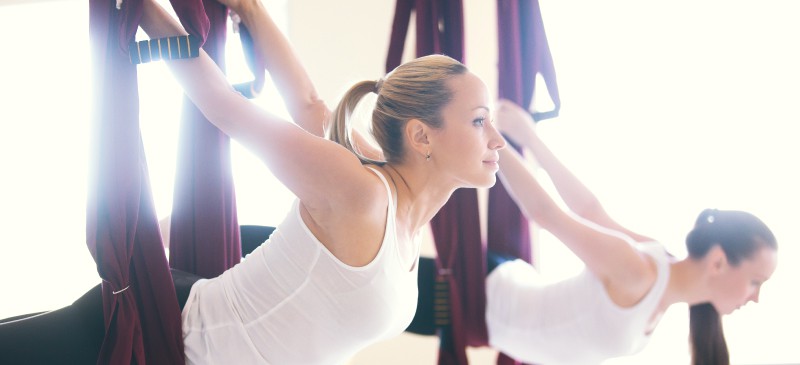Axe content is medically reviewed anti gravity yoga founder fact checked to ensure factually accurate information. With strict editorial sourcing guidelines, we only link to academic research institutions, reputable media sites and, when research is available, medically peer-reviewed studies.
The information in our articles is NOT intended to replace a one-on-one relationship with a qualified health care professional and is not intended as medical advice. This article is based on scientific evidence, written by experts and fact checked by our trained editorial staff. Our team includes licensed nutritionists and dietitians, certified health education specialists, as well as certified strength and conditioning specialists, personal trainers and corrective exercise specialists. Our team aims to be not only thorough with its research, but also objective and unbiased. Aerial Yoga: Better Than Regular Yoga? Aerial yoga is a relatively new type of yoga that originated out of New York in 2007.
1991 that ultimately became the inspiration for creating this new yoga brand. Ultimately, the use of silk hammocks inspired Harrison to create a brand that incorporates acrobatics, artistic sports and contemporary dance. And as a Tony Award winning aerial yoga choreographer and long-time fitness expert, Harrison has become the expert for aerial performances at such venues as the Academy and Grammy Awards, as well as presidential inaugurations. Yoga was a natural addition to his performance warm-ups. And thus, aerial yoga was born. But what can it do for you? The simplest definition of aerial yoga is a yoga practice that combines traditional yoga postures and Pilates exercises with the use of a silk hammocks to help aid and support the poses.
This is why this type of yoga practice is also call anti-gravity or suspension yoga because for much of the session, you will be suspended off the ground by the hammock. For those with a solid yoga practice, aerial yoga provides a new take on the traditional yoga practice as well as assistance during more challenging postures to help improve alignment and flexibility. For beginners, it offers a level of support in each pose to help students learn and practice proper alignment as strength improves. There are countless options when it comes to the types of aerial yoga classes. There are those that focus on high flying tricks and those that are slower and more meditative. And just like traditional yoga practices, aerial yoga incorporates breath work, a cool down like savasana as well as spirituality or chanting, depending on the studio and individual class.
So, what is aerial yoga good for? How will it improve my overall strength, health and well-being? The list of benefits of anti-gravity yoga are similar to the list of benefits of a traditional yoga practice with a few important differences. It relieves compression in the spine. One of the biggest benefits of hanging in the hammock during poses like downward facing dog or back bends is the relief on the spine. Instead of the natural downward compression of your spine produced by gravity, the muscles in your spine release and relax as you hang, reducing pressure and joint compression. Aerial yoga challenges your central nervous system, mental capacity and proprioception.

Simply put, practicing in the silk yoga swing adds a level of elegant complexity as well as assistance to simple postures that requires mental focus and patience as you learn how to move your body through each pose. Over time, this can lead to repetitive stress injuries. The act of pulling yourself up into the hammock as well as during other transitions is a great way to keep your shoulders balanced and healthy in both pulling and pressing. With the help of the silk hammock, practitioners are able to refine and improve their alignment and relax into the pose. The ability to relax the body leads to improved flexibility.
Aerial yoga is accessible not just for advanced practitioners but for beginners as well. With the added support of the hammock, new students can play with posture and alignment while building the strength to execute yoga poses on their own. Not only that, it allows for questions and added support from the teacher as the number of students per class is lower than a traditional yoga practice. There are countless postures that can be performed with the yoga hammock. Some are more challenging than others in both strength and required flexibility. Regardless of your yoga experience, this series of poses will not only help you learn how use the hammock but also how to transition in and out of the hammock as well as from pose to pose.
Beyond that, it will also challenge your balance and core strength while improving your flexibility. Wrap the hammock around each hand and turn your palms down. With your arms fully extended, walk your feet back as you drop your chest towards the floor. Feel the stretch along your upper ribs and armpits.
Hold this position for 5 slow breaths in and out through your nose. Stand facing the hammock and wrap it around each hand. Turn your palms to face each other. Walk your feet forward as you lay back with straight arms. Tighten your legs and core to keep your body in a straight line.